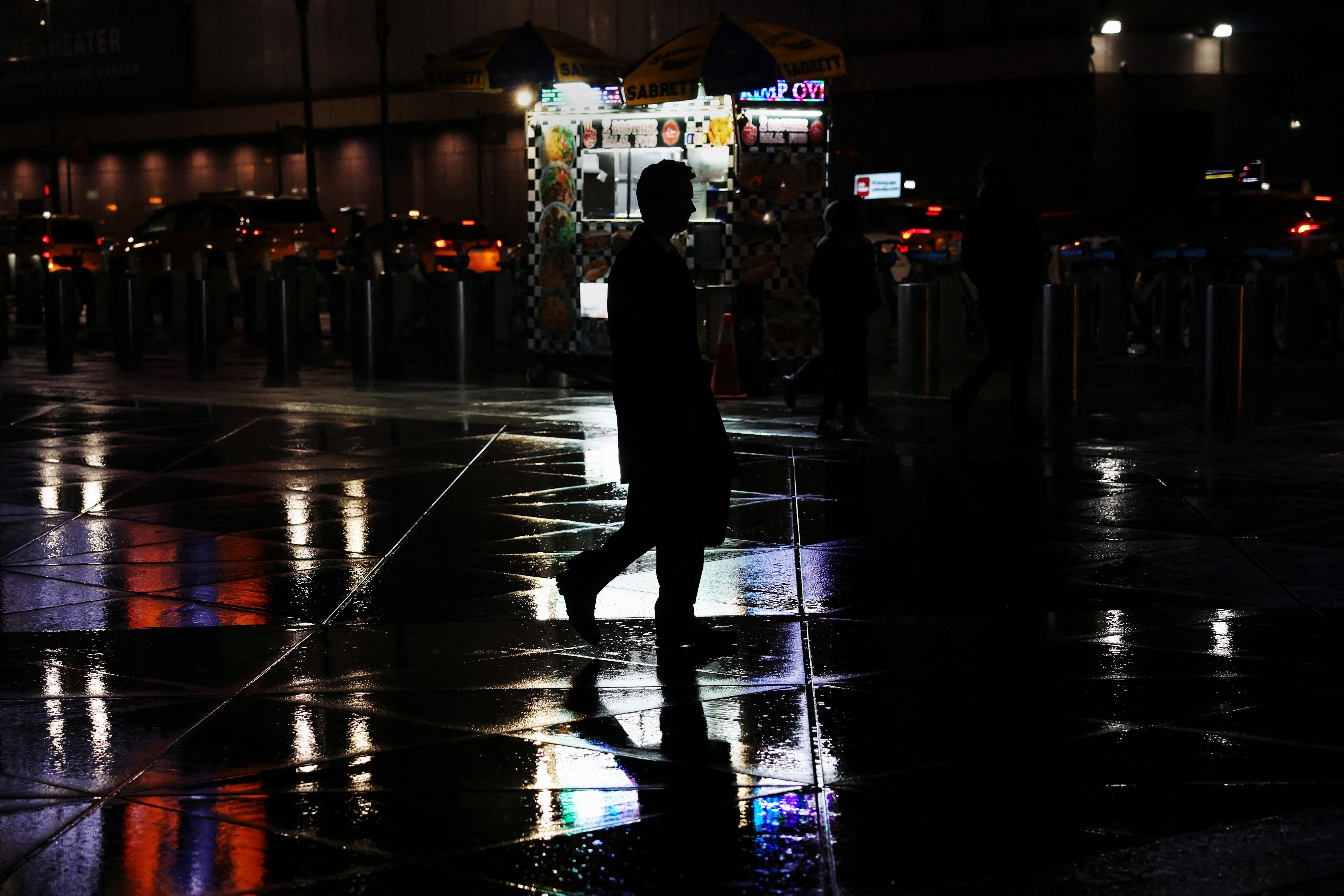New Yorkers, brace yourselves. Rainy days ahead
‘Wednesday’s Weather Rating: 0/10’
Your support helps us to tell the story
From reproductive rights to climate change to Big Tech, The Independent is on the ground when the story is developing. Whether it's investigating the financials of Elon Musk's pro-Trump PAC or producing our latest documentary, 'The A Word', which shines a light on the American women fighting for reproductive rights, we know how important it is to parse out the facts from the messaging.
At such a critical moment in US history, we need reporters on the ground. Your donation allows us to keep sending journalists to speak to both sides of the story.
The Independent is trusted by Americans across the entire political spectrum. And unlike many other quality news outlets, we choose not to lock Americans out of our reporting and analysis with paywalls. We believe quality journalism should be available to everyone, paid for by those who can afford it.
Your support makes all the difference.It has been a dismal week in New York with relentless, heavy rain, unseasonable cold and 60mph wind gusts – soggy conditions that residents should expect a lot more of in future.
“There are no vibes,” wailed New York Metro Weather, a site offering “hype free” forecasts. “Wednesday’s Weather Rating: 0/10.”
The National Weather Service issued a flood watch on Wednesday for low-lying and poor drainage areas of New York City, Long Island and northeast New Jersey due to the increased rainfall along with a high wind warning. Waterfronts and shorelines were also subject to a coastal flood advisory.
The worst downpours were hitting New York on Wednesday before shifting towards the Boston area overnight. The April nor’easter will also drop heavy snow over the upper Great Lakes, upstate New York, and northern New England.
While the New York City area is expected to receive 2.5-3 inches of rain from the storm system, it doesn’t qualify as an extreme event, according to Jessica Spaccio, a climatologist with the Northeast Regional Climate Center.
An extreme rainfall event – sometimes called cloudbursts – is considered at least 6.68in over three days in New York.

During 2021’s Hurricane Ida, for example, the three-day total rainfall measured at Central Park was 8.19in. The flash flooding caused by that storm resulted in at least 13 deaths with many people drowning in basement apartments.
“New York, both the city and the state, have seen an increase in the amount of heavy precipitation events. This trend is expected to continue with climate change,” Spaccio told The Independent in an email.
Last year was the hottest in human history, and heat records have continued to tumble around the world in 2024. The unprecedented highs, in both air and ocean temperatures, are due to the fossil-fuel driven climate crisis and influence of El Nino, a recurring ocean pattern.
As the planet heats up, more moisture is held in the atmosphere, supercharging storms to make them last longer and pack more precipitation, scientists say. The latest report from the UN’s top climate science panel found that “1-in-10 year” rainfall events have increased by 30 per cent globally.
For New York, a lot more rain and flood risk is on the way, particularly in winter and spring, for both coastal and inland areas. By 2050, annual rainfall is expected to increase by 4-11 per cent in New York City with winter faring the worst.
Along the shorelines, heavy rain events will be exacerbated by sea level rise. Sea level at The Battery in lower Manhattan is projected to increase 14 to 19 inches by the 2050s, according to the latest New York State climate assessment.
Of the 12 New York regions analyzed, New York City, the Catskills and south Hudson will get the most rain.
Heavy rain is an ongoing headache for the city which is racing to adapt century-old infrastructure and thousands of buildings to cope. During an extreme rainfall event last September – when parts of the city received nearly 3in of rain in the space of an hour – Rohit Aggarwala, commissioner of the city department of environmental protection, pointed out that the 120-year-old sewer system was built to handle 1.75in per hour.
“This is the result of climate change. Our climate is changing faster than our infrastructure can respond,” Mr Aggarwala said.
Flooding has cost New York state about $130m on average each year over the last two decades – more than double all other extreme weather events combined.

Join our commenting forum
Join thought-provoking conversations, follow other Independent readers and see their replies
Comments